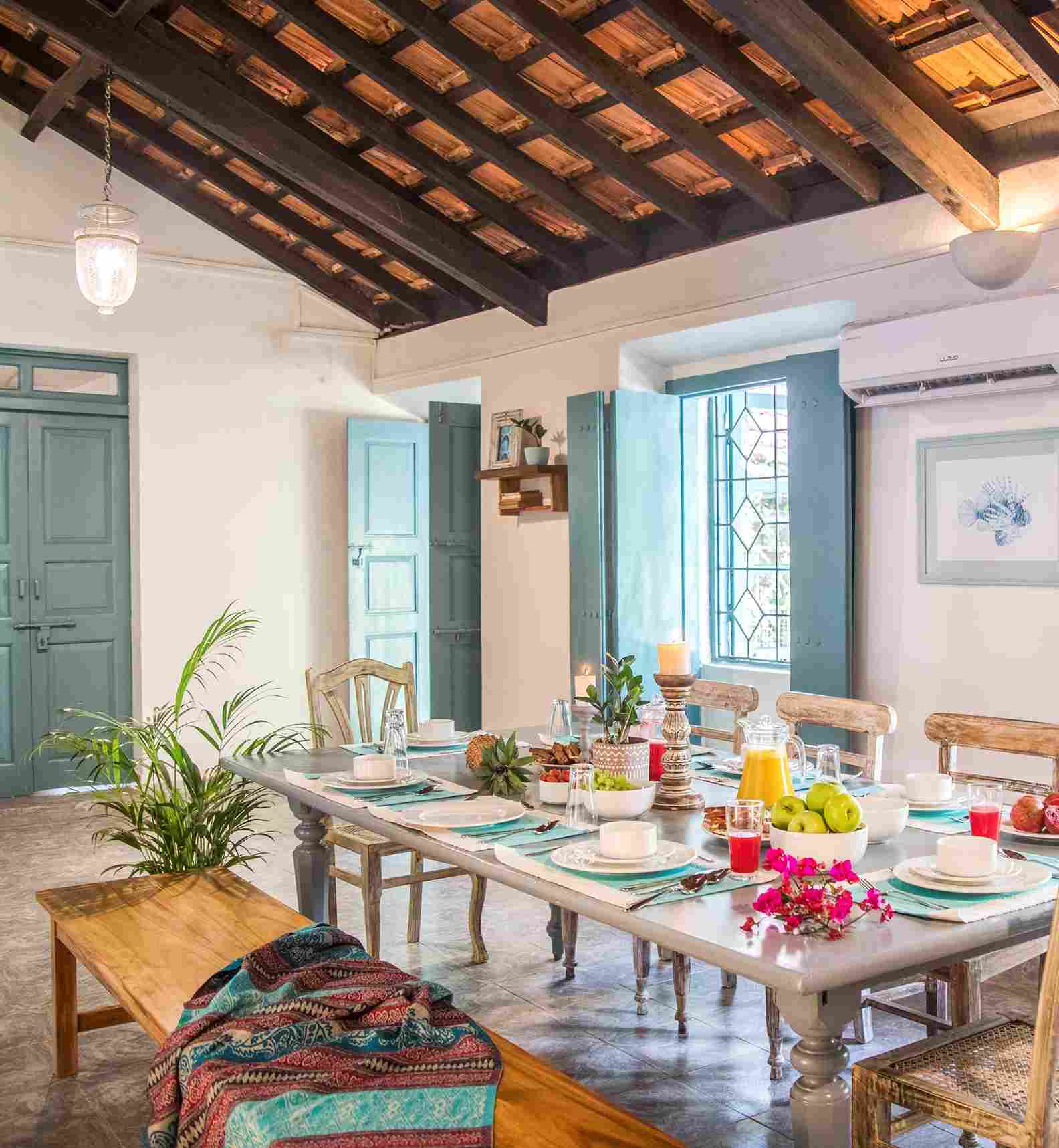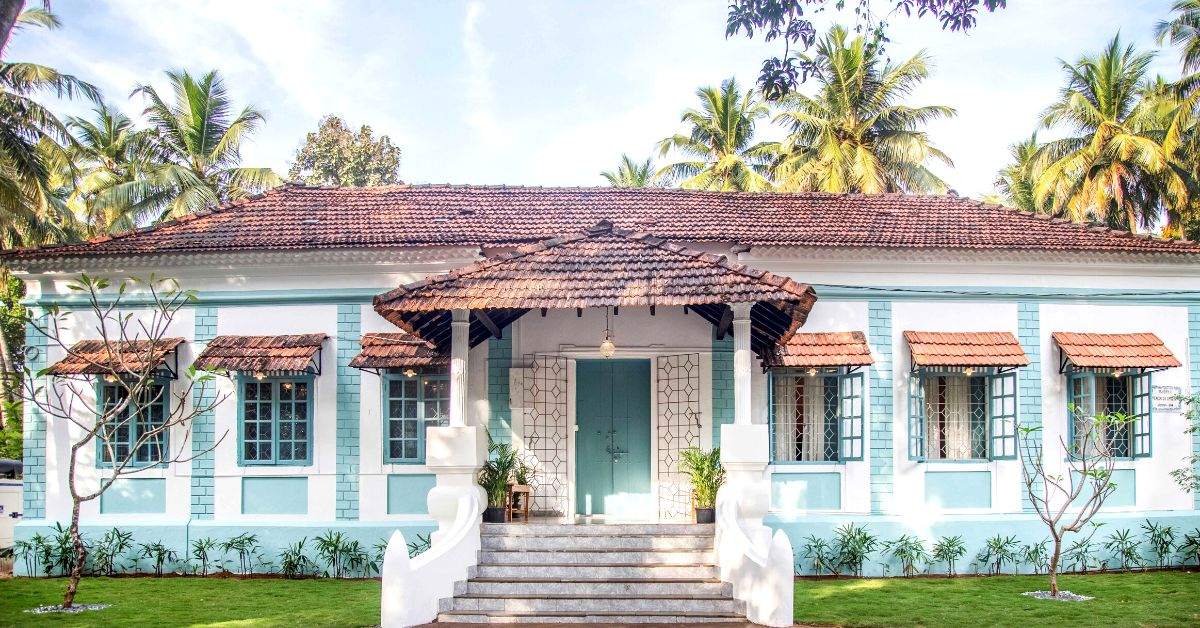The air at Villa Saudade — a refurbished heritage Portuguese mansion in Arpora, Goa — is filled with the aroma of sausages, while in the distance, sounds of the gentle lapping of the water emanate from the swimming pool, making the ambience seem one of relaxation and leisure. Guests here wake up to the first rays of the sun filtering through the colourful, paned windows lining the many rooms of this heritage homestay.
“This is just the vibe we were looking to create,” says Govardhan Damaji, the founder of Acaso Living, a realty firm based in Goa and the venture behind the restoration of this structure.
It has now been over two years since Villa Saudade first began welcoming guests from all over India and even overseas. Architect Rochelle Santimano, a 33-year-old who calls Goa her home, says that designing this property was an exciting opportunity.
The first reason for this was the centuries of history that remains in the core of this structure.
Looking back 400 years
As the story goes, the 400-year-old heritage mansion was home to the Pinho family, one of Goa’s oldest Portuguese families. The descendant, Vasco Pinho, a famed historian and author, was the one to lease it out to Acaso Living for revamping in 2020.
Rochelle recalls that the first thing that struck her when she lay her eyes on the building was its resilience after all this time. A walk around the 4,500 sq-ft property, which took her a total of six months to restore and revamp, revealed that it also harboured many secrets.

“Mr Pinho told me the house had been built during the Portuguese rule, and so had survived the battles that ensued during the time. An interesting anecdote he narrated was of how the Marathas began attacking Goa from the North and infiltrating into Arpora. The Portuguese were not ones to sit quietly, so they retaliated with rifles, the marks of which can still be seen on the main door.”
Following the end of Portuguese rule, the house was witness to the so-called “hippie” era of the 60s and 70s, when the “hippie” cultural movement from the US spread to other parts of the world, and saw an influx of tourists, mostly Europeans, arrive at Goa through the ‘Hippie Trail’.
“They began living here and making the place their own. The house did see members of the Pinho family coming and going, sometimes living here for brief periods. But, once the ‘hippies’ left, the house saw a long silence,” she adds.
It was after being vacant for decades that Pinho felt it was time the house saw the laughter, activity and charm it once did, and so took the call to restore it into a homestay.
Rochelle conducted an initial assessment of the property, and her primary observations were that the home was intact and in good shape. “The structure was laid out in a way that gave us ample area that we could demarcate as bedrooms, living rooms, etc. This meant we could avoid messing with the structure and stick to bringing in new modernities without changing the skeleton much,” she notes.
Her motive was simple — to find a way to preserve the past while bringing in modernities such as an attached bathroom to every bedroom and new furnishings.
Redesigning history
Owing to its glorious history, the house has been a stalwart in the bylanes of Arpora, often being pointed to by children and grownups alike who marvel at its palatial landscape.
“Everyone knew it as ‘The White & Blue House’, and so I did not want to completely change the facade. So, I tweaked the colours only a bit, softening the white and changing the blue to aqua. The intention was for people to still be able to recognise the house. I also introduced this colour scheme in the interiors to complement the structure and colours. The traditional red oxide floor that Goa homes see was polished and waxed so it would go well with the walls,” elaborates Rochelle on the design philosophy.
While structurally not much modification was seen, the kitchen was previously in a verandah outside the bedroom, was set up in the outhouse, while the verandahs were converted into lounging areas, along with having bathrooms added to each room.
The rest of the home sees grey tiles, which lend it a classy elegant vibe. Elaborating on the furnishings, Rochelle says natural wood was the popular option, while a lot was preserved from the original house.
“For instance, the bedrooms at Villa Saudade have side tables that were once upon a time trunks and chests filled with books. We wanted to give life to the original home’s furnishings by repurposing them. Similarly, the dining table, armchairs, and study table are all from the original home, as are the balustrade and architraves. The windows, with their mother of pearl shell, are unique and have been restored,” points out Rochelle, adding that the lights have been sourced from antique vendors.
For the decor that is not repurposed from the original home, it is locally sourced from Mapusa market and local antique shops in Goa. But what gives Villa Saudade its quaint touch are the mementoes from the past that evoke a kind of nostalgia.
“These include the photos lining the walls in the hall and rooms, which are from Pinho’s personal collection and quite rare. The intent of arranging these in the foyer area was for people to get acquainted with the history of the land as well as the house. We even have his collection of authored books for guests to read,” she adds.
A stay at Villa Saudade
You can experience this quaint piece of history for Rs 30,000 a night, which varies depending upon the season.
As Rochelle puts it, the main challenge is “maintaining the past while bringing in the future”.
While you take advantage of the many cultural aspects at Villa Saudade, there is much to contribute to your experience. The four rooms have all amenities such as laundry facilities, toiletries, tableware, high-speed internet, etc.
While at the homestay, guests can explore the many things Arpora has to offer. The North Goa inland nestled in the hills offers a bird’s eye view of the salt pans of Goa, along with its white-washed churches and palm trees. But the highlight of it all is the Saturday market that bustles with local antiques, wafting aromas of meats, and of course, the sweets of Goa.
Villa Saudade currently welcomes 120 guests every month, and even as one sits back to watch it all unfold, Rochelle says it isn’t simply a homestay, but the coming true of a dream.
Edited by Divya Sethu
If you found our stories insightful, informative, or even just enjoyable, we invite you to consider making a voluntary payment to support the work we do at The Better India. Your contribution helps us continue producing quality content that educates, inspires, and drives positive change.
Choose one of the payment options below for your contribution-
By paying for the stories you value, you directly contribute to sustaining our efforts focused on making a difference in the world. Together, let's ensure that impactful stories continue to be told and shared, enriching lives and communities alike.
Thank you for your support. Here are some frequently asked questions you might find helpful to know why you are contributing?

